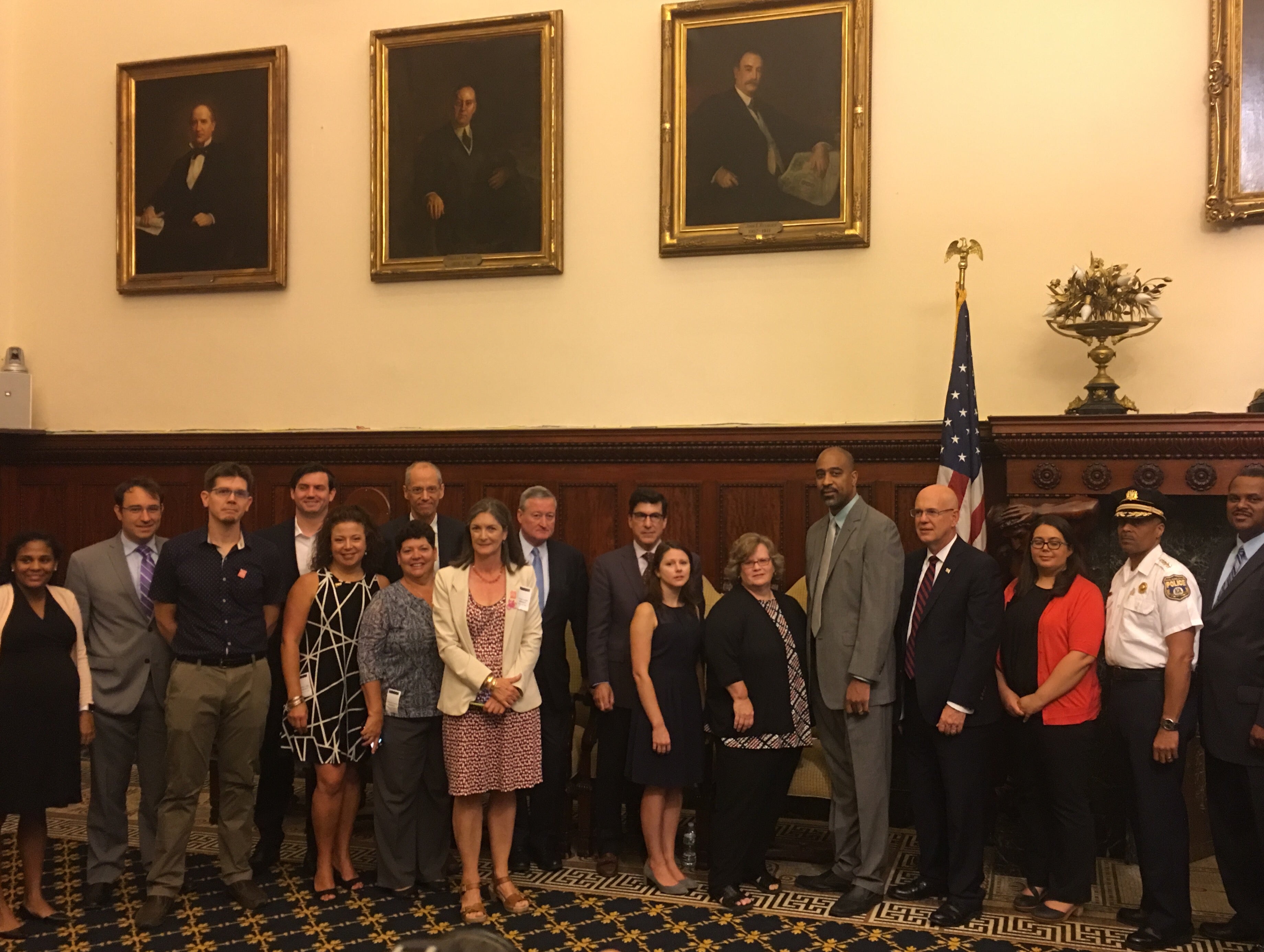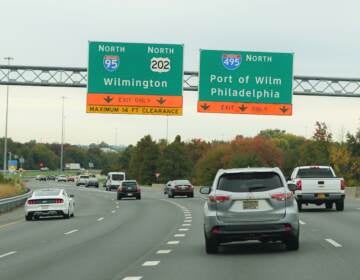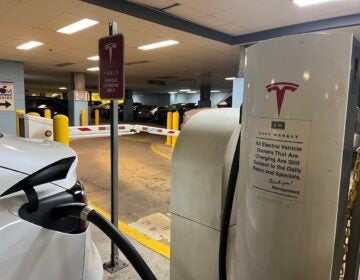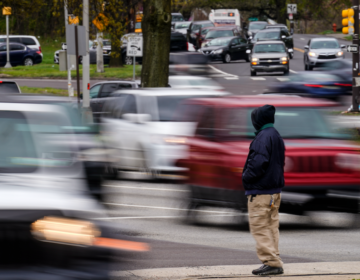With Vision Zero Action Plan, city outlines strategy for making residents care enough about traffic safety to accept slower streets

At a press conference in the Mayor’s Reception Room in City Hall, the Vision Zero Task Force announced the release of its Action Plan, a three-year, multi-pronged approach to drive traffic fatalities down to zero by 2030.
The Task Force was joined by Mayor Jim Kenney, Managing Director Michael DiBeradinis, OTIS Deputy Managing Director Michael Carroll, Police Commissioner Richard Ross, Public Health Commissioner Dr. Thomas Farley, and SEPTA General Manager Jeff Knueppel, plus a few other civic leaders.
Conspicuously absent from the celebratory announcement: A single member of City Council, whose support is necessary for many of the Action Plan’s more consequential interventions.*
When asked about the apparent lack of support from a legislative body not known for shying away from photo ops, OTIS’s Michael Carroll demurred. “I can’t speak to the schedules of the council people,” he said.
To be fair, Thursday’s press conference did overlap with the start of City Council’s weekly session, which was also scheduled for 10 a.m. But as longtime Council watchers know, those sessions, held two floors above Mayor’s reception room, never start on time; As of 11 a.m., City Council had only just started its session.
City Council holds the formal authority over the establishment of new bike lanes in most instances. Individual district Council members also wield the informal Councilmanic prerogative to veto nearly any proposal involving public space in their district. Alterations to streetscape engender fiercely ambivalent reactions among community groups, with factions passionately for and against, leading many members to punt on the proposals. Without Council’s approval, making structural changes to the streetscape is practically impossible.
All who did gather Thursday morning applauded the plan, which highlights grim statistics in making the case for safer streets, such as the fact that around 100 Philadelphian die every year in traffic crashes. The plan calls for focusing first on the city’s most dangerous streets — almost 50 percent of serious-injury crashes occur on just 12 percent of the city’s roads.
The Action Plan published Thursday differs little from the draft plan released in March. Then, as now, the plan focuses on reframing the stale debate over street use. Currently, most proposed changes to the streetscape quickly devolve into rhetorical shoving matches between differing users groups: drivers v. cyclists v. pedestrians v. residents v. passers-through. By couching plans to slow down traffic or separate differ road users (e.g. by installing protected bike lanes) in the stark terms of violence reduction, the Kenney administration hopes to lessen resistance to streetscape improvements that have been proven in other cities to reduce crashes.
It is one thing to oppose a bike lane because it’ll mean less parking; it is another to oppose a bike lane even though it’ll save lives. That’s the communication strategy the Action Plan sets out to test.
Traffic safety advocates applauded the Action Plan. Sarah Clark Stuart of the Bicycle Coalition of Greater Philadelphia expressed cautious optimism the plan will lead to improvements.
“These kind of changes to city’s public streets take time, but they will happen,” she said. “This kind of change is going to help everyone, not just bicyclists — it’s helping pedestrians, it’s helping motorists, it’s making the streets safe for everyone. And I know council will want to be on board with that.”
Moreover, the Action Plan provides a yardstick to measure the city’s progress on traffic safety, said Stuart. “It allows the city to hold itself accountable and the public to also see what progress is being made. I think that’s a very authentic gesture on the city’s part and it shows they’re serious about this.”
Despite assurances from OTIS officials in the spring that the Action Plan would identify the streets set to receive traffic safety improvements, the final version retained the draft’s lack of specificity.
While the exact locations of these interventions remain unknown, they generally all work under two basic conceptual frameworks: slowing down and separating users. Vehicle speed and injury severity are intrinsically linked, so many aim to slow down traffic: Speed humps, narrower lanes, stop signs and raised intersections all aim to nudge drivers into laying off the gas. When cars, bikes and pedestrians all try to use the same space, the likelihood of something tragic occurring increases, so other called-for interventions aim to separate road users: Protected bike lanes, bicycle light signals, improved crosswalks, pedestrian bump-outs, and timed intersections all try to keep these groups apart. Often, these interventions remove spaces for on-street parking or temporary stopping, much to the consternation of local residents who enjoy the convenient car unloading they convey.
Many of the traffic interventions called for in the Action Plan will be funded through state and federal grants, which Philadelphia has enjoy considerable success securing in recent years. In fact, last year, funds for about a dozen, still-unbuilt, protected bike lanes were awarded. The Action Plan also calls for additional and ongoing analysis of Philadelphia’s crash patterns in order to prioritize the interventions, building upon the considerable amount of crash data already available. But in recent years, no bike lane or pedestrian bump out proposed failed to see the light of day for lack of money or data. It has been political will to overcome — rightly or wrongly — resistance from hesitant nearby residents that has doomed these projects, which traffic engineers and safety experts say would reduce crashes.
In past few years, plans for redesigning Washington Avenue, Market Street, John F. Kennedy Boulevard, and 22nd Street were all placed on the proverbial shelf to collect dust after being met with varying degrees of community resistance. This year, plans to upgrade the bike lanes on Pine and Spruce Streets to protected bike lanes appear to have befallen to a similar fate, as has a proposal to protect the stretch of Lombard Street’s bike lane leading up to the South Street Bridge. OTIS officials insist all are still viable projects being actively pursued. All of the projects have undergone at least some planning, and some have been fully designed, and grants have been secured for funding. Only political will, or the lack thereof, holds back construction.
When asked whether the administration would use the bloody statistics splashed across the Action Plan’s pages — 252 severe traffic-related injuries in 2016, 432 crash-related deaths between 2012-2016, four children every day reported to be involved in traffic crashes, and the highest traffic deaths per capita (6 per 100,000) among peer cities — to pressure City Council into backing the roadway changes the Action Plan calls for, Mayor Kenney took the podium.
“You don’t govern by putting pressure, you govern by convincing people of your position,” he said. “Talking to them explaining to them having our staff talk to their staff to answer their questions, address their concerns, is where you get 9 votes, and that’s what you need to do.”
It’s the political philosophy Kenney ran on in 2015 — the cajoler-in-chief, the anti-Rahm Emanuel. That approach worked on the soda tax and on Rebuild, the Mayor’s two crowning political achievements thus far. Whether that same approach will work on this issue, heretofore an ancillary concern argued out in shouty community meetings rather than City Hall, will depend on whether the Action Plan can successfully lend it the moral suasion of pre-kindergarten education or rehabilitating parks and libraries.
*UPDATE: After publication, Mayoral spokesman Mike Dunn sent the following comment explaining why no Council members attended.
“The reason no City Council members were present at the event is because we screwed up in scheduling it. We couldn’t have picked a worse time for them. Even though the formal meeting did not start until 11am, Council members were meeting prior to that in caucus. In other words, they’re busy at 10 a.m. In fact, we heard directly from several council members who did want to attend but could not. So we apologize to Council members for our error; we know they are as dedicated to the vision of zero traffic deaths by 2030 as the Administration, and they deserve credit for that. To attribute their absence today to a lack of support for the goal is simply wrong. It was our fault.”
WHYY is your source for fact-based, in-depth journalism and information. As a nonprofit organization, we rely on financial support from readers like you. Please give today.






